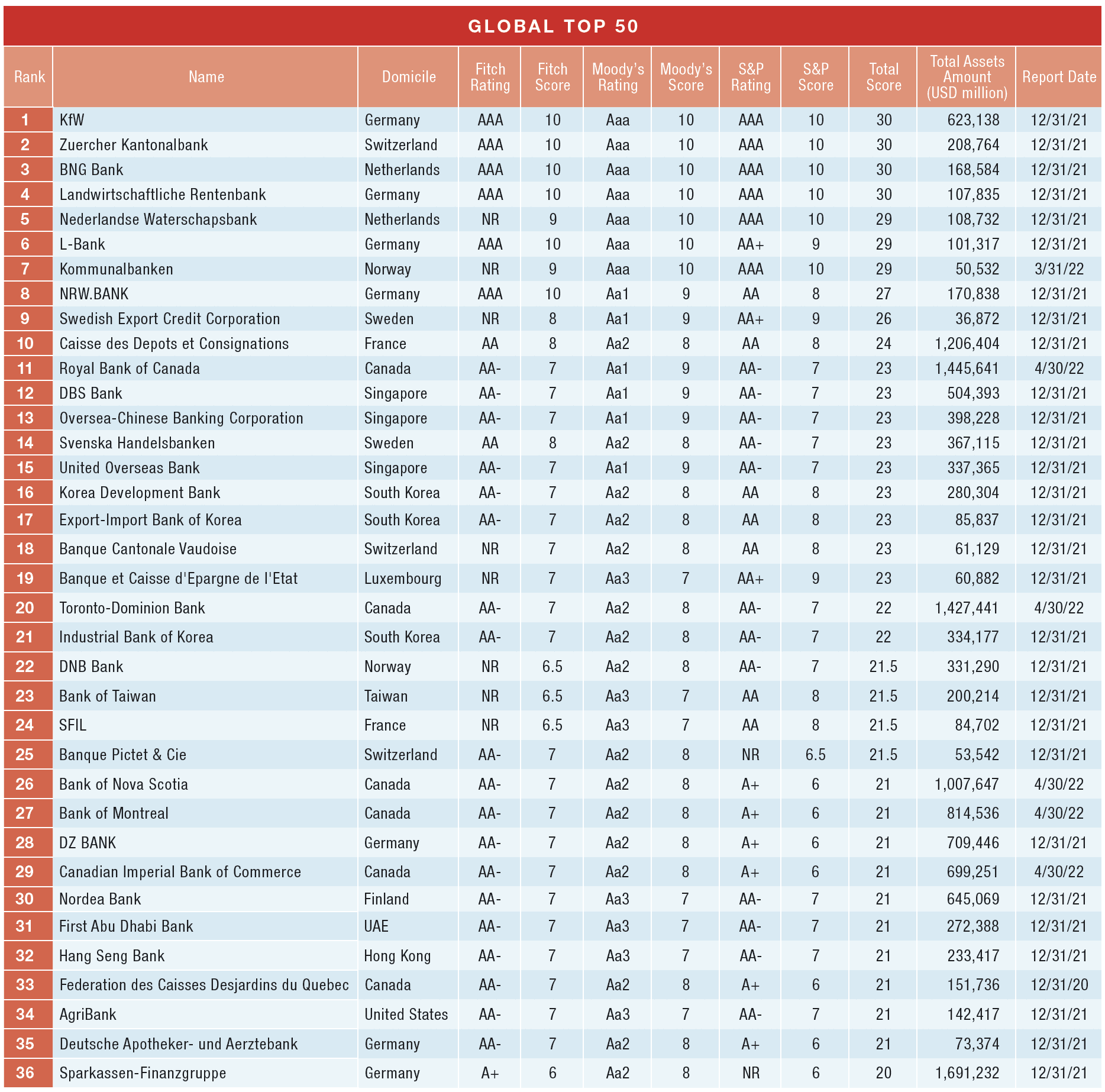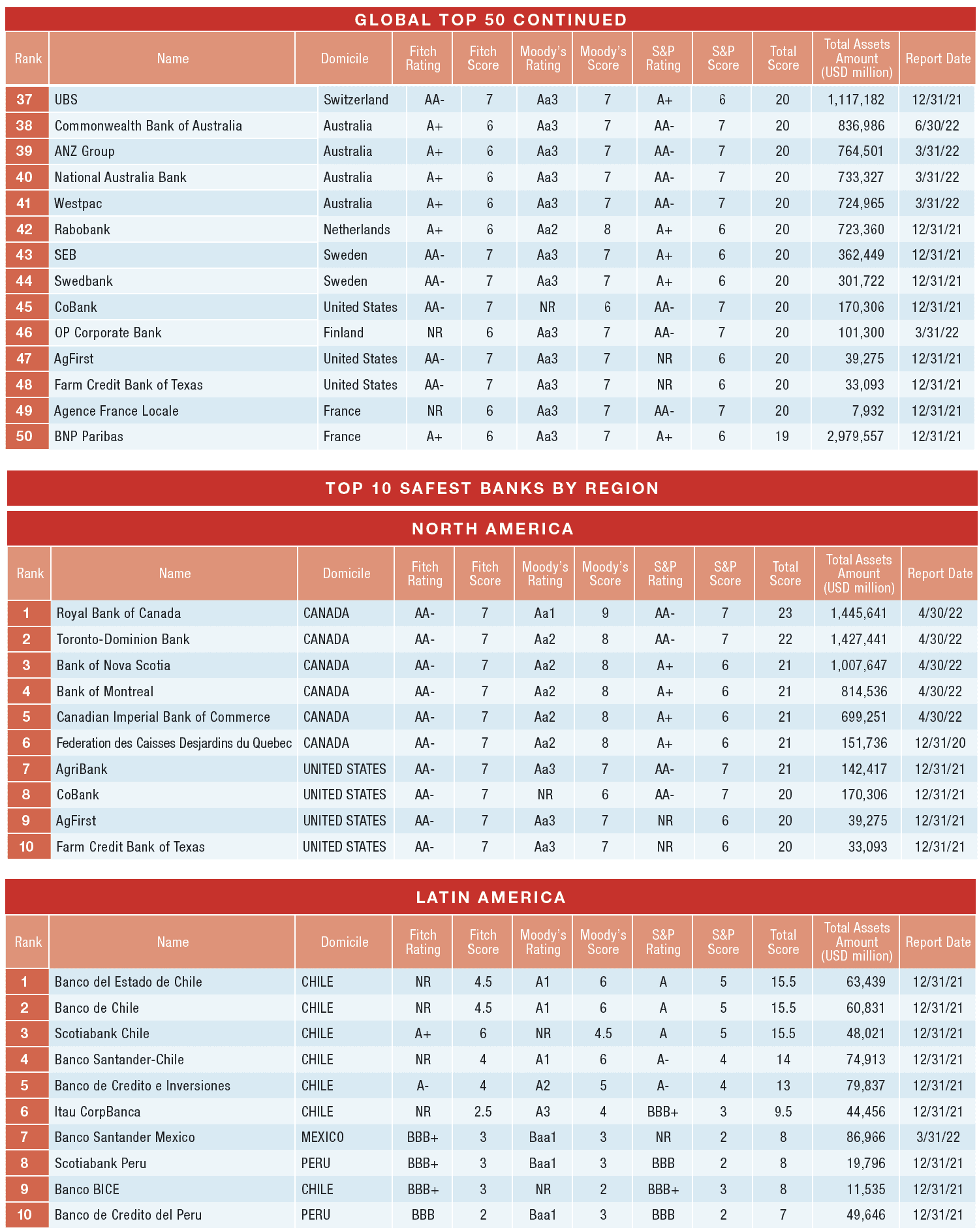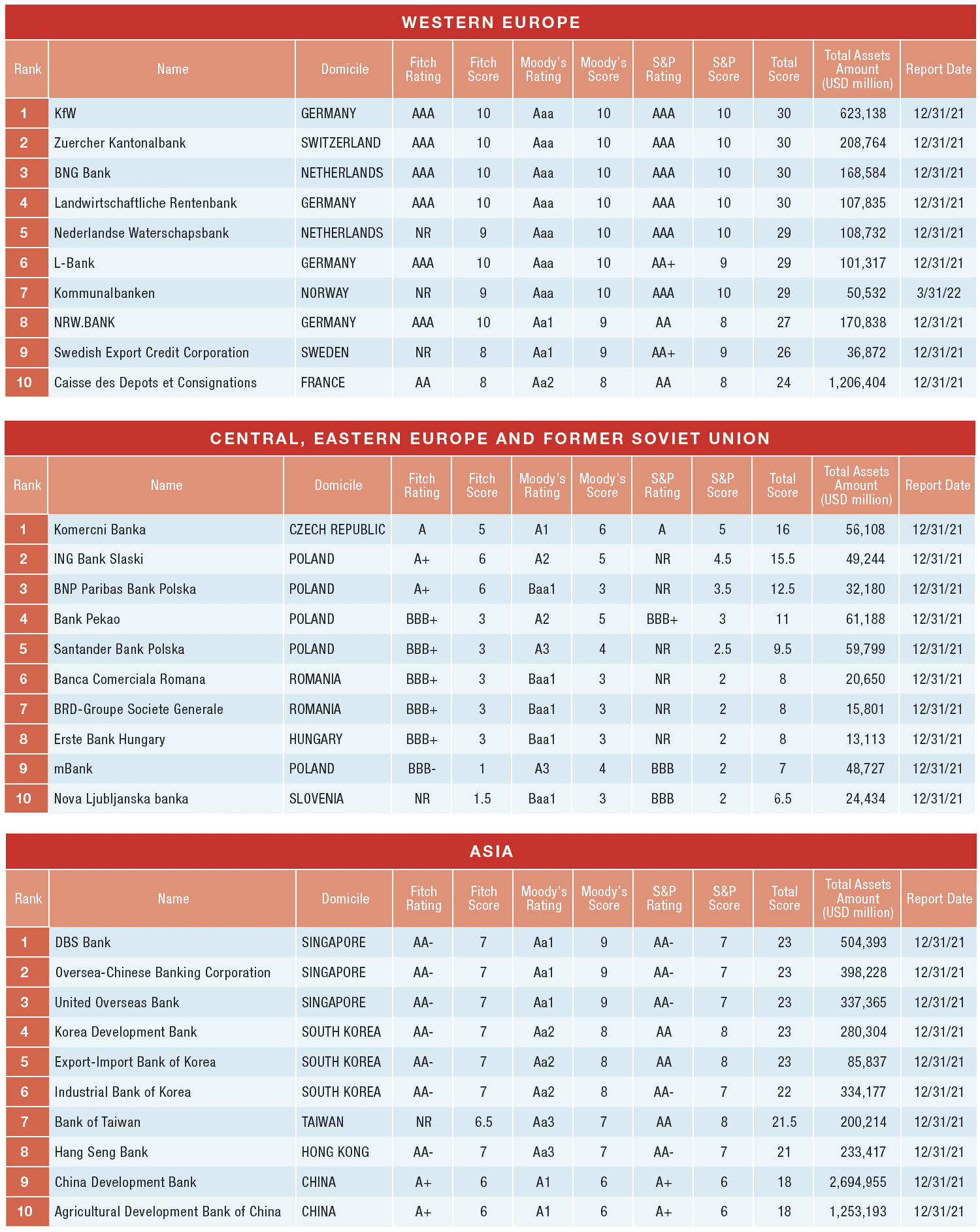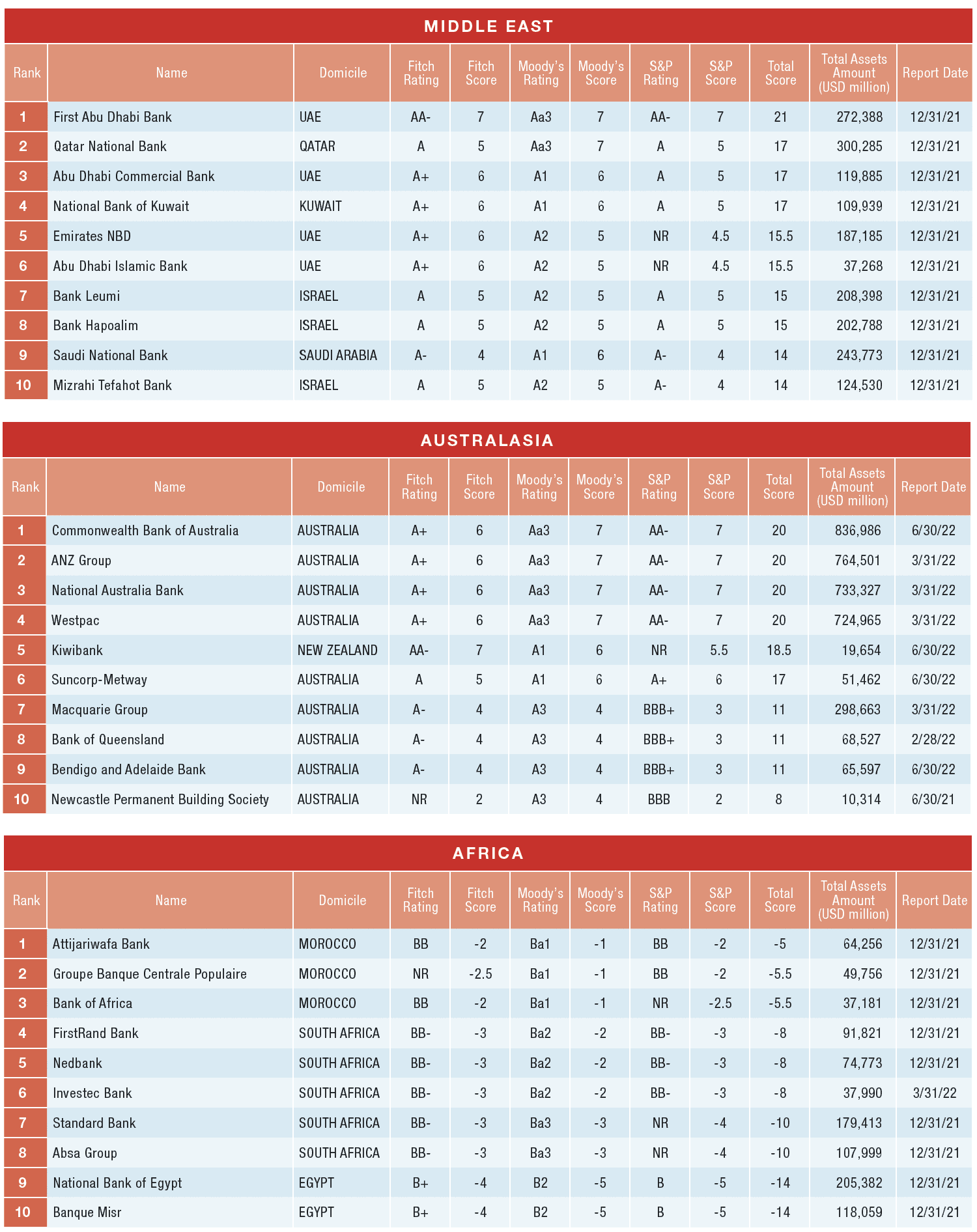Our annual ranking of the World’s Safest Banks shows the finance sector has recovered better than many economies, and looks set to prosper in recovery.

The world’s economies and their banking systems have much to contend with as the outlook for sharply slowing global growth threatens to derail a Covid-19 recovery that appears to be very short-lived.
With the simultaneous withdrawal of pandemic-related stimulus and hiking of interest rates to combat inflation, risks to the global economy are accelerating. Rate hikes by the US Federal Reserve have prompted downward revisions for economic growth for the remainder of the year and through 2023. According to the OECD, global growth is forecast to slow to 3% in 2022 and to 2.2% in 2023, while in the US growth of 1.5% during 2022 is expected to decline further to 0.5% in 2023.
The finance sector rebounded strongly with the resurgence in activity as pandemic fears receded. Rising loan demand, improved portfolio performance, revived consumer spending and robust market activity contributed to stronger earnings and bank profitability. During 2022, many global banks benefited from rising net interest margins as central banks have aggressively hiked interest rates to quell inflation.
While margins may continue to expand, rising recessionary expectations in many regions of the world significantly threaten the prospects for profitability growth. Against considerable uncertainties, our rankings of the World’s Safest Banks serve as a valuable reference point by identifying banks that continue to demonstrate resiliency across the globe.
The following pages include our rankings of the safest banks globally and by country, with the top 10 in each region as well as category rankings for the Safest Emerging Market Banks, Safest Commercial Banks, and more. This annual Global Finance report, researched and authored by banking analyst David Sanders, also includes tables for the World’s Biggest Banks.
The Global Top 50
The top ten banks in the overall global ranking exhibit remarkable ratings stability and remain unchanged compared to last year. In fact, Germany’s KfW wins the top ranking for a stunning 14th year in a row.
But the year also saw some dramatic changes in the top ranks. Royal Bank of Canada (RBC) surged to No.11 from No. 20 a year ago: Moody’s upgraded assessment of the bank cited management’s successful execution of key strategic initiatives and the bank’s strong track record of earnings stability founded on a diversified business mix.
Following S&P’s upgrade of the sovereign rating of Taiwan, Bank of Taiwan jumped 20 positions, to No. 23. The rating change signaled Taiwan’s enhanced credit strength and its ability to support Bank of Taiwan as a systemically important bank. The export of consumer electronics and tech components, including semiconductors, has been robust despite ongoing geopolitical tension. South Korea, the other major global supplier of semiconductors, is consistently represented in our rankings, showing up this year in Korea Development Bank at No. 16, Export-Import Bank of Korea at No. 17, and Industrial Bank of Korea at No. 21.
In Sweden, authorities reduced the regulatory requirements for loss-absorbing debt, prompting Moody’s to downgrade SEB’s senior debt rating, pushing it down 12 spots to No. 43. Conversely, country peer Swedbank rose six positions as Fitch recognized the bank’s progress with strengthening anti-money laundering risk controls. These actions aligned the ratings of these two banks across the three agencies.
Methodology: Behind the Rankings
Our rankings apply to the world’s largest 500 banks by asset size and are calculated based on long-term foreign currency ratings issued by Fitch Ratings, Standard & Poor’s and Moody’s Investors Service. Where possible, ratings on holding companies rather than operating companies were used; and banks that are wholly owned by other banks were omitted. Within each rank set, banks are organized according to asset size based on data for the most recent annual reporting period provided by Fitch Solutions and Moody’s. Ratings are reproduced with permission from the three rating agencies, with all rights reserved. A ranking is not a recommendation to purchase, sell or hold a security; and it does not comment on market price or suitability for a particular investor. All ratings in the tables were valid as of August 31, 2022.







